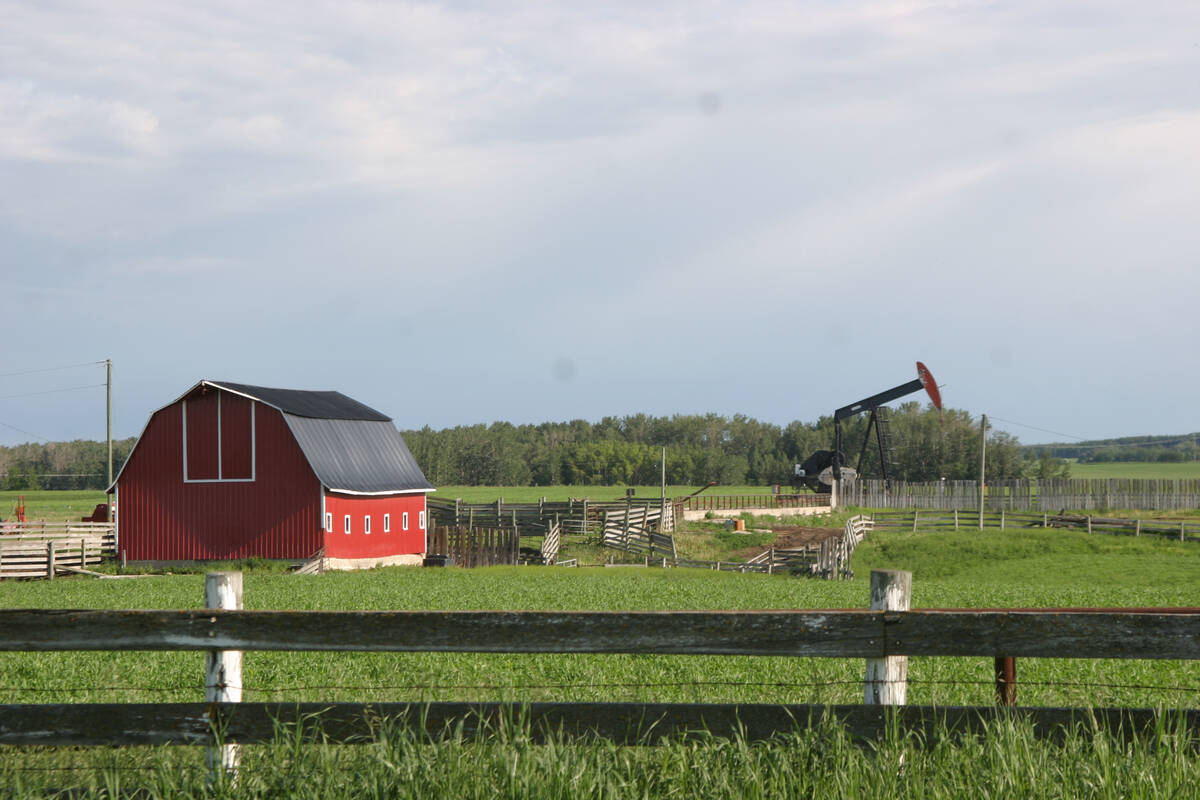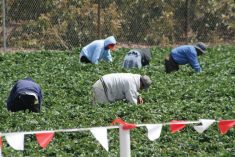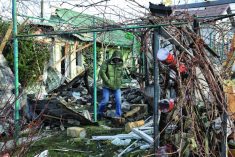[UPDATED: Nov. 5, 2019] The legalization of marijuana has — oddly enough — been good for business for one Alberta producer of construction materials.
That’s because Airdrie-based Just BioFiber makes modular building blocks out of hemp fibre.
Prior to pot’s legalization a year ago, people in the construction industry used to jokingly ask if their hempcrete products could be smoked.
“The snicker factor has been lost,” said Terry Radford, the company’s sales director VP of development.
Read Also

Recommendations in the mature assets strategy could cause potential problems for landholders
The Western Stock Growers’ Association urges producers to pay attention to the potential changes to Alberta’s Mature Assets Strategy.
“It took us awhile to get over that stigma. The legalization of marijuana helped distinguish the difference between hemp and marijuana. It helped field those questions.”
Hempcrete is not a new product. The basic recipe is to mix fibres from the inner woody core of the hemp plant with a lime-based binder to produce a material that is non-combustible, breathes and has a high insulation value. The hemp used by Just BioFiber is first processed at InnoTech Alberta’s decortication plant at Vegreville and then at another facility Maskwacis.
“We use the straw part of the hemp,” said Radford. “The first step is to separate the fibre from the woody core and it has to be sized correctly. We need a nice particle distribution, around two centimetres, something in that range. And then we develop our binder that we use around the hemp, and we put that in a mould around our structural frame.”
This structural frame makes the blocks look like a child’s snap-together building blocks. Radford’s brother, Mac, came up with the idea for these blocks while he was helping a friend build a hemp house in B.C.
“He liked the characteristics of the material, but it took a long time to build,” said Radford. “Mac wanted to build with it economically, so that’s where he got the idea to make a structural block that you could just stack up and dry.”

Mac Radford, who has four decades of industrial and commercial construction experience, also wanted a product that was quick and easy to build with and cost effective. InnoTech Alberta helped with the research and development.
The result is a system using modular blocks, which are roughly 21×11 inches and eight inches high and can be sawn.
The price for the blocks is about the same as insulated concrete forms.
“It’s about $30 to $35 a square foot. It’s in the middle of the price range,” said Radford.
So far, most of the demand for its products has come from B.C., with four homes so far built there with the blocks.
“We built one small building in Ontario and we’re building two more on Vancouver Island this year,” said Radford.
Although it employs full-time engineers as well as plant and production managers, the company is fairly small, focusing on product testing and introducing the product to the marketplace.
“We have talked to a lot of construction guys and they have all told us the same thing — they will build whatever a customer wants them to build,” he said. “This is where we have to educate the builders on our material, but also educate the consumers to create the draw and want to build a house that is sustainable; that has less of a carbon footprint.”
Builders are also hesitant to use the material because there hasn’t been enough data collected on how it performs in a real-life environment. Just Biofiber is trying to make up for this lack of knowledge by collecting data on the houses built with its blocks.
“One of the first houses we’ve built, we have six months of data on that one, and they’re not using any energy to heat or cool their home,” said Radford.
The company has tested hemp in different climates (including Edmonton, Seattle, Anchorage, Miami and Arizona) and the material performs well in all of them, he said.
Hemp displaces moisture in a home. The homes in Vancouver Island will be at 90 per cent humidity in the mornings, and the houses will stay about 50 to 60 per cent humidity during the day.
“It’s very slow to wick away any heat and moisture in the building. It normalizes the material as well as inside the home,” said Radford.
Hempcrete also has the ability to stabilize a building’s temperature because it retains heat.
Building with hemp also has environmental advantages.
“Per acre, you’ll get like three tonnes of hemp straw,” said Radford. “It’ll sequester about 1.6 times its weight in CO2 while the plant is growing. It’s a really good CO2 sink.”
The hemp fibres also come from the inner core of the plant, “which is considered to be kind of a waste material,” he added.
“The other benefit is that in Alberta, it’s plentiful and we’ve got a good supply of it, which is why we’re here.”
Just BioFiber currently has enough hemp supply and will need to increase demand before it requires more growers.
“We will need to get up to a *million blocks per year before we look at our own decortication process,” said Radford.
But that hinges on the product making a name for itself.
“It takes a long time to get any product in the construction business. We just need to get homeowners to do a little more research into what they want to build. Whatever a homeowner wants to build, the builder will build it.”
*UPDATE: The article previously stated that the company would “need to get up to a billion blocks per year…” before decortication.
















